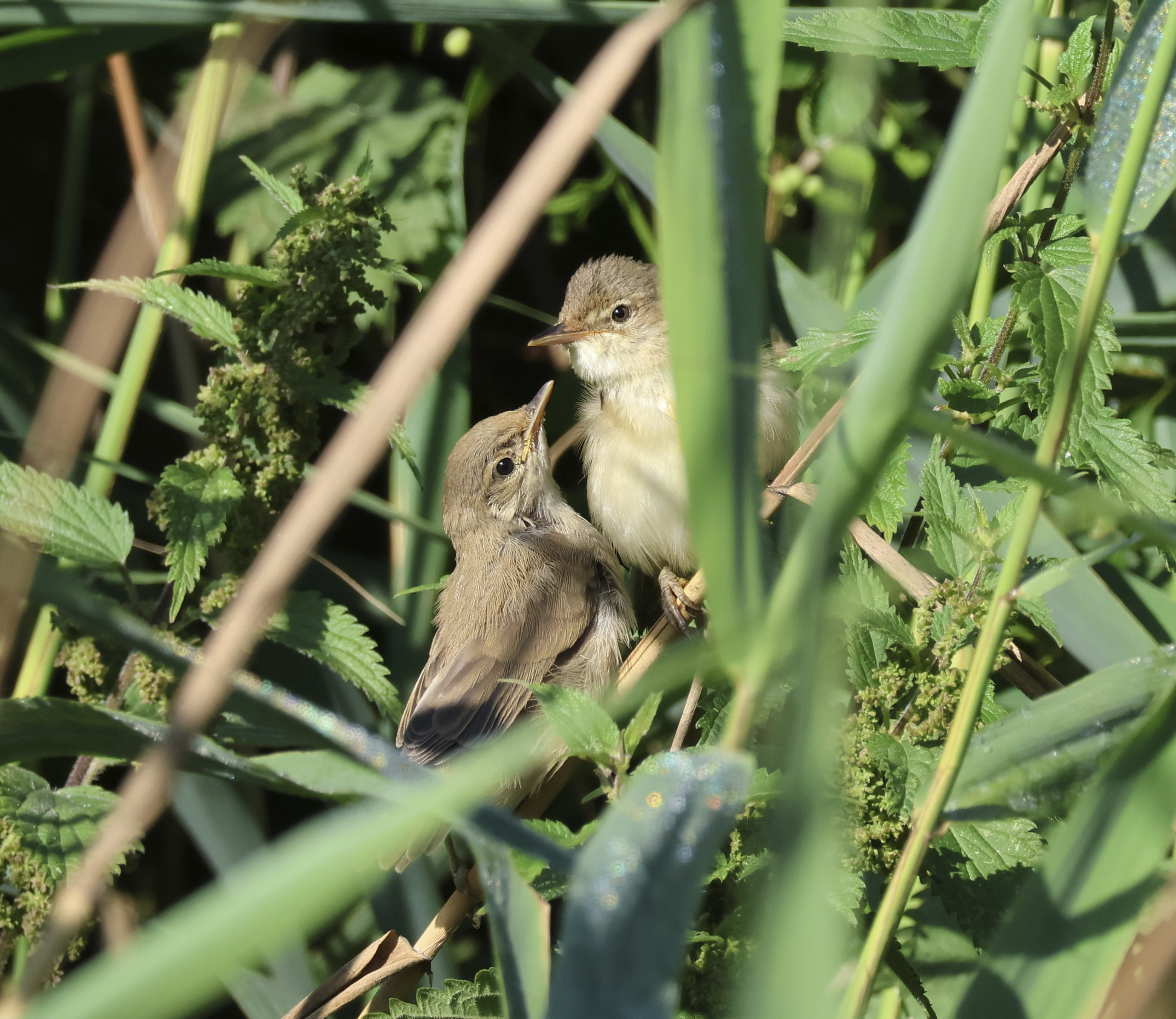North-easterly winds dominated during early to mid-June in Lincolnshire, and consequently five singing Marsh Warblers were located along a 2.5-km stretch of the coast at this time. Most of these swiftly moved on but one lingered, raising hopes that it might attract a female. On 13 June, a second Marsh Warbler was noted in close proximity to the male.
The following day, the male was observed displaying with its wings drooped, bill held open and tail splayed, with lots of contact calls noted. This clearly did the trick as later the same day the female was observed carrying nest material. The male from this time was content to either observe the nest-building activity from a nearby dog rose or loosely follow the female around. The male's persistence had been well rewarded – a study in Belgium found the gap between the pairing of males and females averaged 3.3 days (Dowsett-Lemaire 1981) compared to 13 days for the Lincolnshire birds.

The male Marsh Warbler in song on 10 June 2023 (James Siddle).
Thereafter, things went very quiet – males soon stop singing after pairing. Daily observations brought only occasional sightings of the adults, which at least confirmed their continued presence, but this period was spent nervously waiting to see if the birds had been successful – only around half of pairs typically manage to raise young (Kelsey 1989).
The evidence we wanted came on 12 July when the adults were observed bringing in food. The male and female developed markedly different approaches to the nest site, which made establishing the exact nest location – in an area of willowherb – difficult to ascertain.
By 17 July it was clear that feeding rates were reaching a peak, with a 30% increase in nest visits over a period of 48 hours. Eventually, on 18 July, the first juvenile was seen. Clutches of four predominate for late-breeding Marsh Warblers (Kelsey 1989) and this proved to be the case for the Lincolnshire birds, with four juveniles successfully fledging. As is typical for the species, the birds dispersed rapidly and an adult seen carrying food some 150 m from the nest site on 27 July was the final sighting.
This represents the first confirmed breeding record of Marsh Warbler for Lincolnshire and follows the pattern observed since the 1990s of the UK breeding distribution shifting towards coastal areas in the east (Bell et al 2021).


In the top photo, one of the juveniles (left) with one of the adults. In the bottom photo, an adult feeds a hungry juvenile (James Siddle).
Acknowledgements
I would like to thank Dick Lorand and Richard Doan for help with locating and monitoring the Marsh Warblers.
References
Bell, B, Green, H, Hodson, J, & Holling, M. 2021. The recent history of breeding Marsh Warblers in Britain. British Birds 114: 255-266.
Dowsett-Lemaire, F. 1981. Eco-ethological aspects of breeding in the Marsh Warbler, Acrocephalus palustris. Revue d'Écologie, 35 (3): 437-492.
Kelsey, M G. 1989. Breeding biology of Marsh Warblers Acrocephalus palustris in Worcestershire: A comparison with European populations. Bird Study, 36(3): 205-210.



